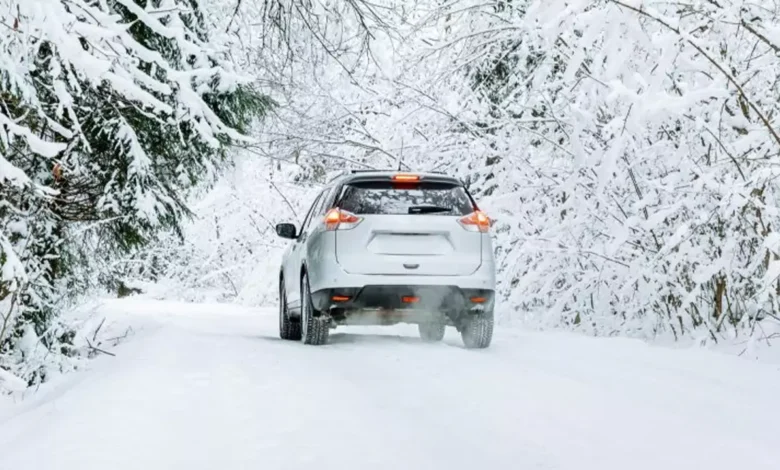Winter is Coming! We Hope Your Car is Ready

As winter approaches, it’s essential to ensure that your car is ready to face the challenges posed by freezing temperatures, snow, ice, and overall harsher conditions. Proper preparation not only ensures your safety but also prolongs the life of your vehicle.
Below is a detailed guide to help you get your car winter-ready.
Inspect and Change Your Tires
The most critical part of winter driving is tire care. Cold temperatures can significantly affect your tires, reducing their grip and performance. Here’s what you should do:
Switch to Winter Tires: Winter tires, also known as snow tires, have deeper tread patterns designed for better grip on snow and ice. Unlike all-season tires, they are made of a special rubber compound that remains flexible even in freezing conditions.
Check Tire Pressure: As temperatures drop, tire pressure can decrease, affecting the tire’s grip and control. Ensure your tires are inflated to the manufacturer-recommended pressure. Check them regularly throughout the winter, as fluctuations in temperature can lead to loss of air.
Check Tread Depth: Worn-out tires can lead to loss of control on slippery roads. Ensure your tires have a tread depth of at least 4/32 inches, though deeper treads (6/32 or more) are recommended for winter.
Test Your Battery
Cold weather can be brutal on car batteries. When temperatures drop, the chemical reactions inside the battery slow down, reducing its ability to hold a charge. This can lead to difficulties starting your car.
Check the Age of Your Battery: Most car batteries last between 3 to 5 years. If your battery is nearing the end of its life, consider replacing it before winter hits.
Test Battery Health: You can take your vehicle to a service station or use a multimeter to check the voltage of your battery. Ideally, the voltage should be between 12.4 and 12.7 volts when the engine is off.
Inspect Battery Connections: Ensure that the battery terminals are clean and corrosion-free. Corrosion can lead to poor connections, which may prevent the battery from charging or providing enough power to start the car.
Check and Replace Wiper Blades
Visibility is crucial in winter conditions, especially during snowstorms or sleet. Your windshield wipers play a key role in keeping your vision clear.
Switch to Winter Wiper Blades: Winter wipers are designed to handle snow and ice better than regular ones. They come with a rubber coating that prevents them from getting clogged with ice.
Replace Old Wiper Blades: Even if you don’t opt for winter-specific blades, make sure your current blades are in good condition. Replace them if they are worn out or streaking.
Fill Up on Windshield Washer Fluid: Standard washer fluids can freeze in extremely cold conditions. Use a windshield washer fluid specifically designed for low temperatures, typically rated to work in temperatures as low as -20°F (-29°C).
Top Off Fluids and Use the Right Engine Oil
Fluids are the lifeblood of your car, and they are especially important in the winter months. Cold weather can thicken fluids and reduce their effectiveness.
Use Winter-Grade Oil: In colder temperatures, oil thickens, making it harder for the engine to start. Check your owner’s manual for the recommended winter-grade oil. Typically, a low-viscosity oil like 5W-30 or 0W-20 is suitable for winter conditions, as it flows more easily in cold temperatures.
Check Coolant/Antifreeze Levels: Ensure your coolant system is filled with the right mix of antifreeze and water. The typical ratio is 50/50, which protects the engine from freezing and overheating. If you’re unsure, a mechanic can test the antifreeze concentration.
Brake Fluid: Check your brake fluid levels and ensure it is at the recommended level. If your brake fluid is old, it can absorb moisture and freeze at lower temperatures, affecting your braking performance.
Inspect Brakes and Lights
Your car’s ability to stop and be seen in low-visibility conditions is essential for winter safety.
Check Brake Pads and Rotors: If your brakes are squeaking, grinding, or vibrating, have them inspected and replaced if necessary. Slippery roads make it harder to stop, so your brakes need to be in top condition.
Test All Exterior Lights: With shorter days and longer nights, you’ll be driving in the dark more often. Ensure all headlights, taillights, brake lights, and turn signals are working properly. If any bulbs are dim or burnt out, replace them immediately.
Protect Your Car’s Exterior
Winter conditions can be harsh on your car’s exterior, with road salt, snow, and ice contributing to corrosion and wear.
Wash and Wax Your Car: Before winter arrives, give your car a thorough wash and apply a coat of wax. Wax acts as a protective layer against road salt and grime, which can lead to rust.
Protect the Undercarriage: Road salt can cause significant damage to your car’s undercarriage, leading to rust. Many service stations offer undercarriage treatments to help protect it from corrosion. Washing the undercarriage regularly during winter is also a good practice.
Stock an Emergency Kit
Even the best-prepared car can still run into trouble on the road, so it’s essential to have an emergency kit in case you’re stranded.
Essentials to Include:
- A blanket or sleeping bag
- Extra warm clothing, including gloves and hats
- Non-perishable food and bottled water
- A flashlight with extra batteries
- A first aid kit
- Jumper cables
- A small shovel and ice scraper
- Sand, kitty litter, or traction mats to help get your car unstuck from ice or snow
- Flares or reflective triangles to signal for help
Prepare Your Doors and Locks
Freezing temperatures can cause door locks and seals to freeze, making it difficult to access your vehicle.
Use Silicone Spray on Door Seals: Applying silicone spray on your door seals can prevent them from freezing shut, making it easier to open your car doors during the winter months.
Keep a Lock De-icer Handy: If your door locks freeze, a lock de-icer can quickly thaw them out. Store one in your home or in your coat pocket—not in your car, as you may not be able to access it if your locks freeze.
Plan for Battery and Engine Warm-Up
In extreme cold conditions, it may take longer for your engine and other components to reach optimal operating temperature.
Use a Block Heater: In regions where temperatures frequently dip below freezing, a block heater can be used to warm your engine before you start your car. This reduces the wear on the engine and makes it easier to start.
Let the Engine Warm Up: Give your engine a few minutes to warm up before driving. This allows the oil to flow through the engine and ensures all components are properly lubricated.
Preparing your car for winter is not just about comfort—it’s about safety and performance. By taking the time to follow these steps, you’ll not only protect your vehicle but also ensure a safer driving experience throughout the winter months.
